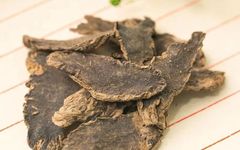 Herb Query】After clicking【set as
Herb Query】After clicking【set as Starred/Top
Starred/Top for easy access
for easy access
1. Xuan Shen (Scrophularia Root)
Xuan Shen is the root of the Scrophulariaceae plant, containing xuan shen saponins, iridoids, and volatile oils. Pharmacological tests have shown that Xuan Shen decoction, alcohol extract, and infusion have blood pressure-lowering effects; it also has vasodilatory and cardiotonic effects. Various Xuan Shen species have antipyretic and anticonvulsant properties.
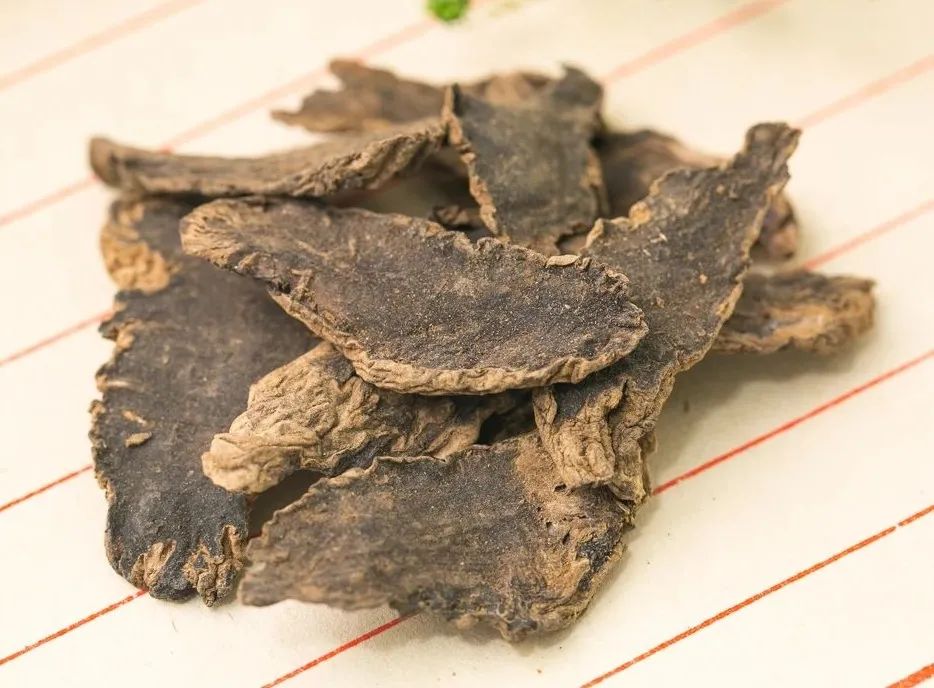
In TCM, it is considered cold in nature, sweet and bitter in taste, and functions to nourish yin, clear heat, cool blood, and detoxify. It is suitable for heat-related illnesses, thirst, rashes, bone steaming, night sweats, spontaneous sweating, injury to fluids, constipation, and sore throat.
Dosage:6-12 grams; avoid in cases of loose stools and excessive phlegm-dampness.
2. Jue Ming Zi (Cassia Seed)
Jue Ming Zi is the seed of the leguminous plant Cassia obtusifolia, containing anthraquinones, vitamins, and other compounds. Pharmacological tests have shown that Jue Ming Zi lowers blood pressure and serum cholesterol; it also has antibacterial properties and promotes bowel movements.
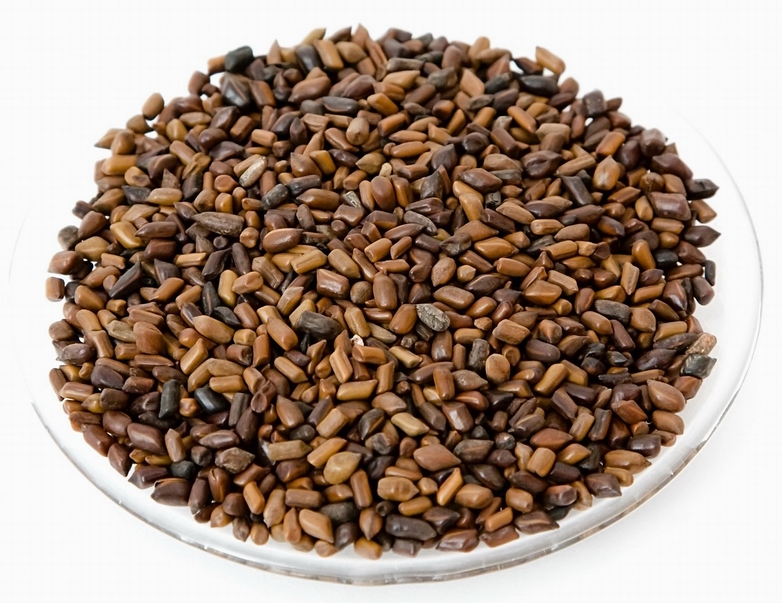
In TCM, it is considered slightly cold, sweet and bitter in taste, and functions to clear liver heat, brighten the eyes, promote urination, and relieve constipation. It is suitable for red, painful eyes due to liver heat or wind-heat, as well as for treating hypertension, hepatitis, cirrhosis, and habitual constipation.
Dosage: 3-9 grams, crushed and decocted.
3. Di Gu Pi (Lycium Bark)
Di Gu Pi is the root bark of the Solanaceae plant Lycium barbarum, containing chlorogenic acid, phenolic compounds, and other substances. Di Gu Pi has significant antipyretic effects, and its decoction can lower blood sugar, reduce serum cholesterol, and combat fatty liver. Its infusion has shown significant blood pressure-lowering effects in animals.
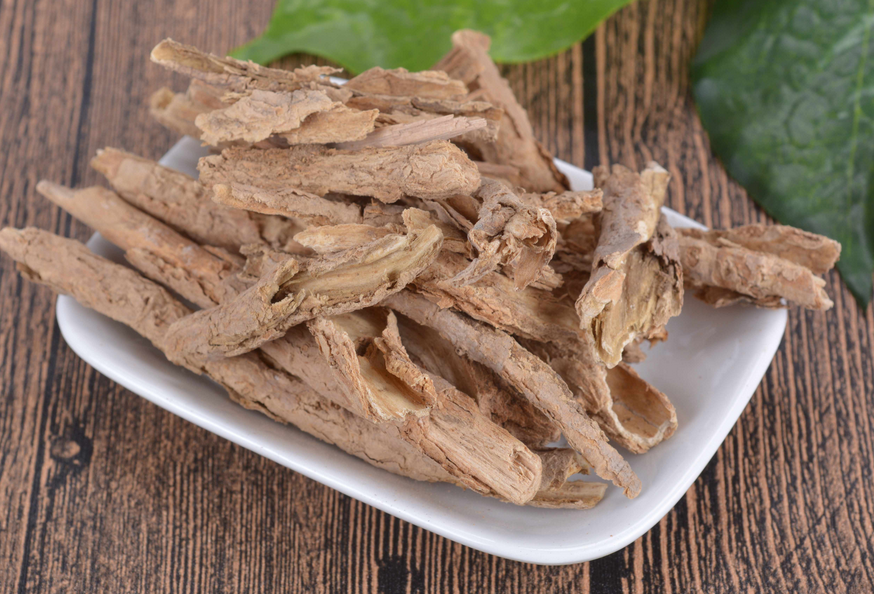
In TCM, it is considered cold, sweet and bland in taste, and functions to cool blood, clear heat, and drain lung heat. It is suitable for symptoms of deficiency heat, night sweats, lung heat cough, blood heat causing hemoptysis, and conditions like tuberculosis and hypertension.
Dosage: Generally 3-9 grams.
4. Lu Gen (Reed Rhizome)
Lu Gen is the underground stem of the grass plant Phragmites australis, containing oryzanol and asparagine.
In TCM, it is considered cold, sweet in taste, and functions to clear heat, generate fluids, relieve irritability, stop vomiting, and promote urination. It is suitable for heat illnesses that injure fluids, irritability and thirst, gastric heat vomiting, and lung heat cough.
Dosage: Generally 9-30 grams for dried; 15-40 grams for fresh.
5. Lian Qiao (Forsythia Fruit)
Lian Qiao is the fruit of the Oleaceae plant Forsythia suspensa, containing volatile oils, forsythoside, flavonoids, and alkaloids. Pharmacological tests have shown that Lian Qiao has broad-spectrum antibacterial effects, with forsythoside being a major antibacterial component. It also has anti-inflammatory, antiemetic, diuretic, and cardiotonic effects; the flavonoids can enhance capillary density, thus stopping bleeding caused by capillary rupture.

In TCM, it is considered slightly cold, bitter in taste, and functions to clear heat, detoxify, disperse lumps, and reduce swelling. It is suitable for warm heat, erysipelas, rashes, abscesses, and allergic purpura.
Dosage: Generally 6-9 grams.
6. Mu Dan Pi (Peony Root)
Mu Dan Pi is the root bark of the Ranunculaceae plant Paeonia lactiflora, containing paeonol, paeoniflorin, volatile oils, and phytosterols. Pharmacological tests have shown that Mu Dan Pi lowers blood pressure, has analgesic, sedative, anti-inflammatory, and antipyretic effects, and strongly inhibits various pathogenic bacteria.
In TCM, it is considered cool, bitter and pungent in taste, and functions to clear heat, cool blood, harmonize blood, and eliminate stasis. It is suitable for heat in the blood, rashes, pain, hemoptysis, abscesses, and trauma.
Dosage: 5-9 grams, but avoid in cases of spleen and stomach deficiency with diarrhea.
7. Zhi Mu (Anemarrhena Rhizome)
Zhi Mu is the rhizome of the Liliaceae plant Anemarrhena asphodeloides, containing various saponins and flavonoids. Tests have shown that Zhi Mu has significant antipyretic effects and is effective against epidemic hemorrhagic fever, epidemic type B encephalitis, and tuberculosis.
In TCM, it is considered cold, sweet and bitter in taste, and functions to clear heat, drain fire, nourish yin, and moisten dryness. It is suitable for lung heat cough or yin deficiency cough, irritability and thirst, bone steaming, urinary difficulty, and constipation.
Dosage: Generally 6-9 grams, but avoid in cases of kidney yang deficiency, weak pulse, and diarrhea.
8. Ban Lan Gen (Isatis Root)
Ban Lan Gen is the root of the Brassicaceae plant Isatis indigotica, containing indigo, isatisin, and other compounds. Ban Lan Gen has significant antiviral effects and inhibits various pathogenic bacteria, including Leptospira. Clinically, Ban Lan Gen decoction is used orally or by injection to treat epidemic type B encephalitis, and it is effective for both acute and chronic hepatitis, alleviating symptoms and improving liver function. It is also used for treating viral skin diseases such as herpes simplex, shingles, pityriasis rosea, and flat warts.
In TCM, it is considered cold, bitter in taste, and functions to clear heat, detoxify, cool blood, and benefit the throat. It is suitable for influenza encephalitis, type B encephalitis, pneumonia, erysipelas, heat toxin rashes, and herpes.
Dosage: Generally 5-9 grams; avoid in cases of spleen and stomach deficiency.
9. Jin Yin Hua (Honeysuckle Flower)
Jin Yin Hua is the flower bud of the Caprifoliaceae plant Lonicera japonica, containing chlorogenic acid, inositol, and flavonoids. Pharmacological tests have shown that Jin Yin Hua has anti-inflammatory and antipyretic effects, inhibiting influenza viruses and various pathogenic bacteria and fungi, reflecting its heat-clearing and detoxifying properties.
In TCM, it is considered cold, sweet in taste, and functions to clear heat, detoxify, and is suitable for warm disease fever, heat toxin dysentery, sores, abscesses, and boils.
Dosage: Generally 6-12 grams; avoid in cases of deficiency cold diarrhea and sores without heat toxin.
10. Xia Ku Cao (Selfheal Herb)
Xia Ku Cao is the flower or whole herb of the Lamiaceae plant Prunella vulgaris, containing triterpenoid saponins and other compounds. Pharmacological studies have shown that the whole herb has blood pressure-lowering effects and its decoction inhibits certain common skin fungi and various pathogenic bacteria.
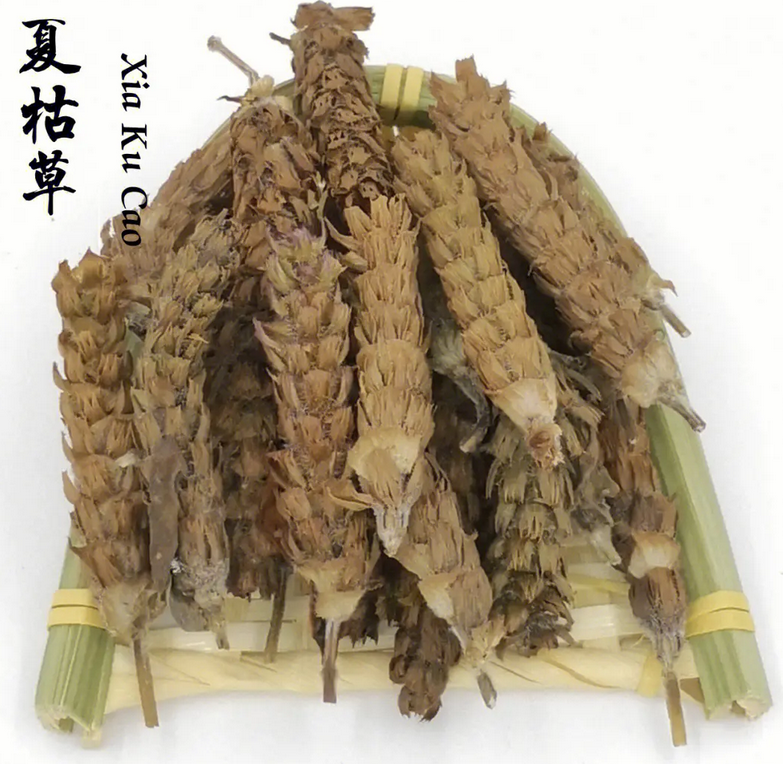
In TCM, it is considered cold, bitter and pungent in taste, and functions to clear liver fire, disperse stagnation, and lower blood pressure. It is suitable for red, swollen, painful eyes due to liver fire, eye pain, irritability, headache, and dizziness; it is also used for scrofula and goiter caused by phlegm-heat stagnation.
Dosage: Generally around 9 grams.
11. Zhi Zi (Gardenia Fruit)
Zhi Zi is the fruit of the Rubiaceae plant Gardenia jasminoides, containing various bitter glycosides, mannitol, and ursolic acid. Zhi Zi has a choleretic effect, increasing bile secretion; it also has cooling, sedative, analgesic, and anticonvulsant effects, and exhibits antimicrobial properties against various pathogenic bacteria and skin fungi.
In TCM, it is considered cold, bitter in taste, and functions to drain fire, relieve irritability, clear heat, and detoxify. It is suitable for heat illnesses with irritability and insomnia, jaundice, red eyes, hemoptysis, and heat toxin sores.
Dosage: 3-9 grams.
12. Pu Gong Ying (Dandelion)
Pu Gong Ying is the whole herb of the Asteraceae plant Taraxacum mongolicum, containing taraxasterol, choline, inulin, and fruit acids. Its decoction has antimicrobial effects and also protects the liver, promotes bile secretion, and enhances immune function.
In TCM, it is considered cold, sweet and bitter in taste, and functions to clear heat, detoxify, reduce swelling, and disperse lumps. It is suitable for acute mastitis, lymphadenitis, shoulder inflammation, gastritis, hepatitis, cholecystitis, and urinary tract infections.
Dosage: 9-15 grams, crushed and applied externally for mastitis, rashes, and abscesses.
End of text. Thank you for your patience in reading. If you find it helpful, please click “ Like” and “~▼Previous Highlights▼
Like” and “~▼Previous Highlights▼

